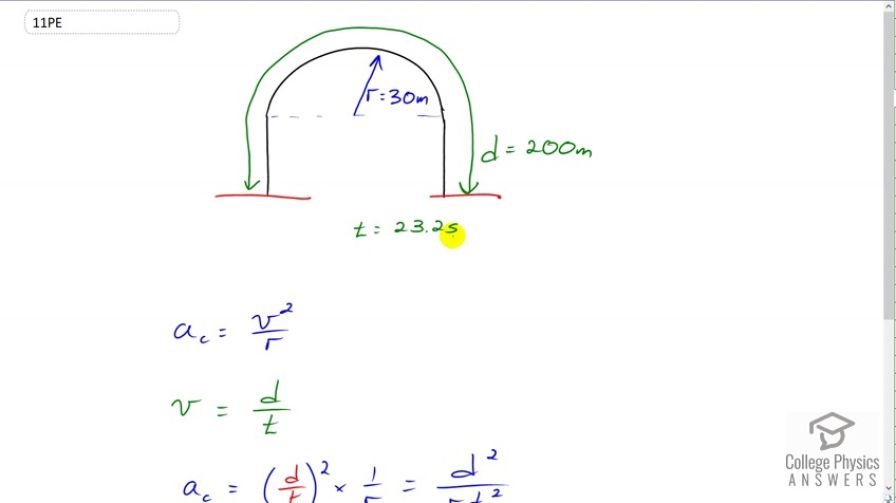Question
A runner taking part in the 200 m dash must run around the end of a track that has a circular arc with a radius of curvature of 30 m. If he completes the 200 m dash in 23.2 s and runs at constant speed throughout the race, what is the magnitude of his centripetal acceleration as he runs the curved portion of the track?
Final Answer
Solution video
OpenStax College Physics, Chapter 6, Problem 11 (Problems & Exercises)

vote with a rating of
votes with an average rating of
.
Calculator Screenshots
Video Transcript
This is College Physics Answers with Shaun Dychko. This runner begins the race here and goes 200 meters until here, and it takes 23.2 seconds to do that. The curved portion of the track is this portion here and has a radius of curvature of 30 meters. We're told to figure out what is the centripetal acceleration while the runner is on the curved portion. So we need to know what the runner's linear speed is and so we'll take the total distance of 200 meters and divide it by the total time to get that. We'll substitute that into our centripetal acceleration formula. We have that here. So we have centripetal acceleration is v squared over r and v in this case is the total distance divided by the total time. So I have substituted that in for v and it gets squared and then it's a bit messy to have fractions within fractions and so instead of writing all of this over r which I could have, but instead I preferred to keep everything on one line so we don't have a fraction that's nested within another. So I'm multiplying by one over r instead of dividing by r. It's easier to see I think that you have d squared on the top and you have t squared on the bottom and r on the bottom as well. So this is the centripetal acceleration. The total distance, 200 meters, squared divided by the radius of curvature of 30 meters, times 23.2 seconds squared, gives us 2.5 meters per second squared is the centripetal acceleration.
